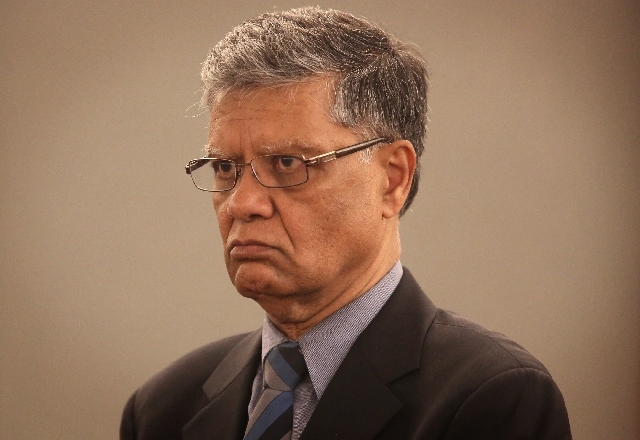Endoscopy center nurse left job because of questionable practices
When registered nurse Karen Peterson left Seattle bound for Las Vegas, she began searching for a new job and in April 2007 landed at the Endoscopy Center of Southern Nevada.
She lasted one day.
Peterson has served as a nurse for 45 years and never before witnessed what she did at Dr. Dipak Desai’s Shadow Lane clinic. Peterson said nurses falsified paperwork, did not wear proper protective gear and left dirty equipment in procedure rooms.
“I called (the director of nurses) the next day,” Peterson testified Tuesday in District Court. “I told her I could not come in because I had issues with the clinic.”
Desai, 63, and co-defendant, nurse anesthetist Ronald Lakeman, 65, entered their fourth week on trial Tuesday. They each face more than two dozen charges — including second-degree murder, criminal neglect of patients, theft and insurance fraud – in connection with a 2007 hepatitis C outbreak.
Prosecutors allege Desai sought to maximize profit margins by overloading the endoscopy clinic with patients and performing as many procedures as possible with little consideration for patients’ safety. That greed combined with his stinginess led to the outbreak of the deadly virus, according to the state.
Peterson recalled a physician using a syringe filled with water to flush a colonoscopy patient through the scope. She refilled the syringe and placed it on the tray next to the doctor. After the procedure, the dirty tray and syringe were not discarded or sterilized.
“When the procedure was over and the patient was moved out, I told the tech that the tray was contaminated,” Peterson said. “She said, ‘That’s OK.’ The nurse anesthetists said to me, in quotes, ‘That’s the way they do it here.’ ”
She was taken aback that nurses only used one glove when inserting an intravenous tube and couldn’t understand the reason behind filling out patients’ charts before the procedures were completed.
During training, Peterson was instructed to use a formula that other nurses at the clinic have consistently testified about. The post-assessment time was two minutes after the procedure; The IV was discontinued five minutes after post-assessment room and the patient was discharged 30 minutes after that.
Only those times didn’t correlate with where the patient was physically.
“The information was placed on the chart before the chart even left the procedure room,” Peterson said.
The reason behind the pre-charting was to move patients through the clinic as quickly as possible, prosecutors claim.
Nurse anesthetist Vincent Mione also spoke to the number of patients that passed through the clinic each day. He said that the patient count started around 45 per day but increased exponentially until Desai’s facilities were shut down in 2008.
Mione, who signed an immunity agreement with the government, described the Shadow Lane clinic as a “factory” or an “assembly line.”
“Many times the patient was still connected (to the oxygen) when we were getting them out of there,” said Mione, adding that staff members had to shout that the patient had yet to be disconnected.
He made up a song after the 1950s hit, “Rawhide” — “Rolling, rolling, rolling, keep those patients rolling …”
“They were moving in and out so fast; it was sort of sick humor,” Mione said of the song.
Like the discharge forms, the times given for anesthesia treatment were fraudulent, Mione said. He wrote down the actual times — 15 to 20 minutes — and would be interrupted during procedures to change them to more than 30 minutes. The reason, according to prosecutors and Mione, was to receive reimbursements from insurance companies.
“It made it look like a patient was still there when the patient wasn’t really there,” he said.

















